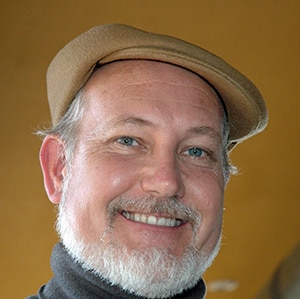
(By Roy Williams) You know what needs to be said. You’re just not certain where to start. Today I’m going to teach you what to say first. By the time you’re finished reading this, you’re going to know how to cause people to be delighted to give you their full attention. They’re going to be eager to agree with you before they’ve even heard what you have to say.
It’s all about how you begin.
Ray Bard — that publisher whose books are statistically more likely to become New York Times bestsellers than any other publisher’s on earth — once told me that nonfiction books always contain these two things:
- A big idea the author wants to share, and…
- Nuts and bolts. A detailed, step-by-step process, with examples of how the big idea can be implemented. In essence, “How to….” Sadly, that’s where most people stop.
And that’s what keeps their books average.
And that’s what keeps sales presentations average, too.
By the way, when Ray Bard shared this with me, I realized that it wasn’t just true of books. It was true of everything. Speeches. Sermons. Advertising. Everything.
According to Ray, books that sell much more than the average number offer a third thing.
- Entertainment. This is what separates great writers and speakers from the average ones. Great writers and speakers don’t just teach us. They entertain us.
But it’s a very rare fourth thing that separates truly great communicators from the ones that are merely informative and entertaining.
- Hope. A great presentation gives its listeners hope. You’ve got to tell them how you’re going to make next time turn out differently than last time. How you’re going to make tomorrow better than yesterday. How you’re going to make the future better than the past.
Always open with hope, not hype. Hope. Begin with hope, lead with hope. That’s where to start. When you give people hope, they’re delighted to give you their full attention. When you’ve given them hope, they’re eager to agree with you, even before they’ve heard what you have to say. We live in the Information Age. People are overflowing with information.
What they need is hope.
Always speak to the felt need first. Speak about the outcome and the benefit before you speak of the process.
I’m not the only person who believes we should focus more attention on our word skills and less on “targeting the right customer.”
Jake Sorofman and Andrew Frank wrote in the Harvard Business Review:
“Big data has become the X factor of modern marketing, the hero of every marketer’s story. But it’s a promise at risk of letting you down. You may be thinking that data will magically turn bush-league marketing into a winning ‘Moneyball’ performance. But that’s an artifact of our big data obsession. Data, alone, isn’t what makes marketing move the needle for business. Data can play a leading role in developing strategy and bringing precision to execution, but it does nothing — absolutely nothing — to stir motivation and create the desire that makes cash registers ring.
So always begin by naming the happy outcome you’re going to deliver.
- Open with hope.
- Deliver your big idea.
- Demonstrate “how to” with nuts and bolts, step by step, just as I’m doing now.
- Always be entertaining. Leave out the parts that people skip.
Remember: Keep it brief because shorter hits harder. Brevity is the soul of wit.
And now I’m going to share with you one last secret about the structure of magnetic communication:
Number one is to open with hope, remember? Number five is to close with vision. Describe in detail the outcome they told you they desire. A great sales presentation is like a great radio ad. You’ve got to open with a vivid and attractive first mental image (FMI) of hope and close with a last mental image (LMI) that gives your listeners a vision of life as it could be, should be, ought to be, will be if they have the courage to get on board. Vision is just another word for hope.
Every living human craves the warm and happy glow of hope. And you’re going to give it to them. You’re going to be smiling so brightly that people will feel happy every time they see you coming. They’ll know that success is on the way and they’re standing squarely in its path because they can see you walking straight at them. You’re going to sell clients that have never before used radio. They’re going to tell their friends how everything began to get better the day you came into their lives. You’re going to move product, generate feedback, increase traffic, make the phone ring, and stack dollars in other people’s bank accounts. Everyone is going to want to know you.
Hope is a powerful thing.
Roy Williams is president of Wizard of Ads Inc. He will be speaking at Radio Ink’s Radio Masters Sales Summit this September. Read Roy’s Radio Ink archives here or read his latest column exclusively in the current edition of Radio Ink Magazine HERE.







The John Vilpe comment is mine just misspelled my name in typing.
Roy,
Absolutely true not only in selling radio ads but in programming radio stations to the top ! Used the power of hope and anticipation every time
as my secret sauce which I learned from modeling one of my programming mentors even though I never worked for him the great Buzz Bennett R.I.P. my great friend & teacher !
Thanks, Roy.
I’ll take a dozen. And, while we’re at it, let’s throw in a bunch for my friends over here. 🙂